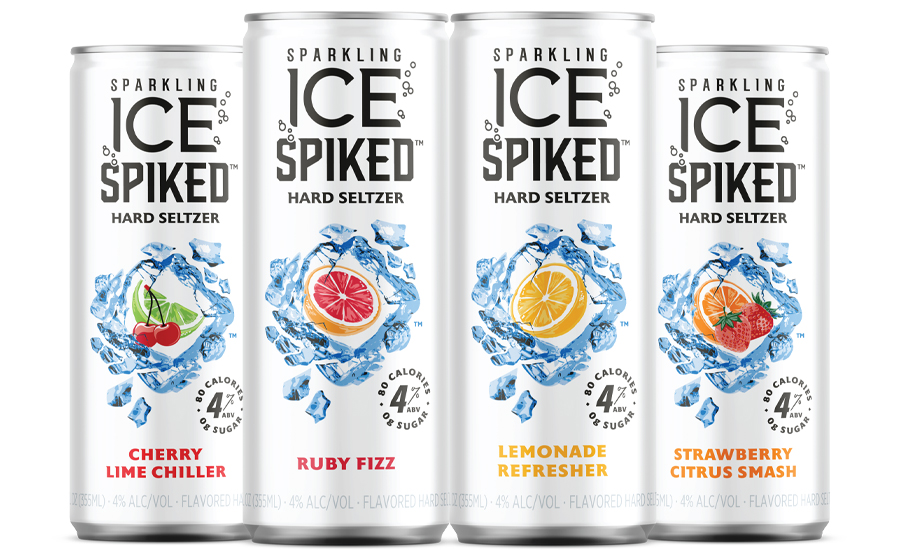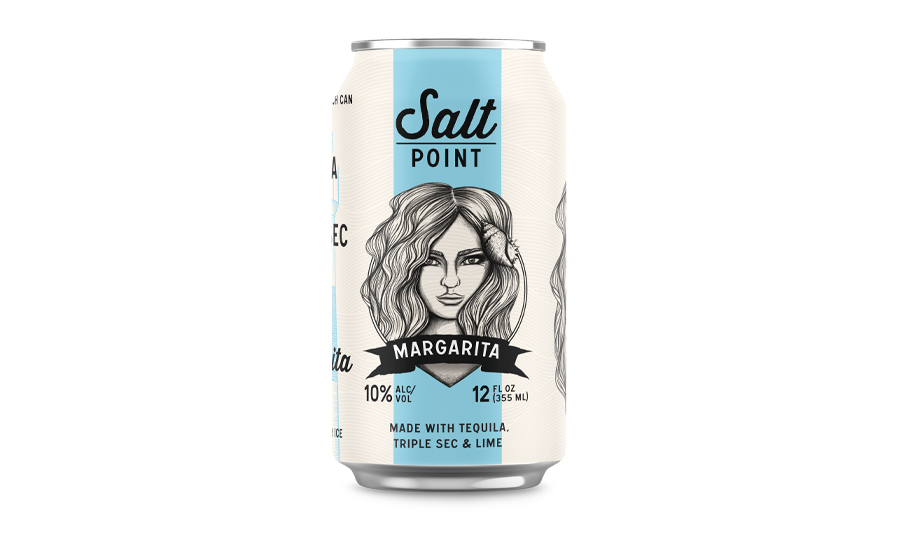Between Drinks
Canned cocktails steal some of seltzers thunder
Ready-to-drink share growing 15% on Drizly

Within the beverage industry, the competition for share of stomach and shelf space remains fierce. But in many cases, consumers are purchasing their favorite beer, wine and spirits through eCommerce, which is experiencing triple-digit growth. These traditional categories are the Top 3 categories at 61% and 56%, respectively, while light liquors (i.e., vodka, gin, light rum) comprise 44% of online sales on Drizly, while dark liquors such as whiskey and dark rum notched 33% of sales, according to the 2021 Drizly Consumer Report.
Yet, what is being purchased on the alcohol eCommerce site continues to shift and blur, according to Liz Paquette, head of consumer insights at Boston-based Drizly.
When it comes to flavored malt beverages (FMBs), one of the most popular subcategories — hard seltzers — continues to be a win-win, particularly among Gen Z and millennial consumers with slightly more females who are driving more than 75% share of hard seltzer sales on Drizly in 2021 to date, Paquette explains. “Hard seltzer share initially took off in 2019, particularly over the summer months, landing the category at 14% of beer share in 2019, up from 5% share in 2018 and 2% share in 2017,” she says.

The break-out drink of 2019, 2020 and 2021 has dozens of beverage companies, large and small, joining the hard seltzer craze, says Brian Sudano, managing partner at New York-based Beverage Marketing Corporation (BMC). “There’s been a multitude of new offerings from the three largest brewers — ABI, Molson Coors and Constellation — along with many craft beer players, small independents and beverage companies such as VPX (Bang Energy) and Talking Rain (Sparkling Ice) in a few years,” he says.
In July, the 4% ABV Sparkling Ice Spiked, a brand of Talking Rain, launched in more than 500 retail shops across the five boroughs of New York City, as well as Westchester and Long Island. Sparkling Ice Spiked is delivering real fruit flavor, with only 80 calories, zero sugar, and 1 gram of carbohydrates in four flavors: Ruby Fizz, Cherry Lime Chiller, Strawberry Citrus Smash and Lemonade Refresher, and is on pace to shatter expectations, the company says.
Yet, ready-to-drink (RTD) canned cocktails are playing off hard seltzer innovations and in the process, stealing some of its growth momentum, according to Drizly’s report. Despite the fact that the 2021 RTD share on Drizly is about half the size of hard seltzers, RTD canned cocktails, at 30%, are outplacing hard seltzers at 29%, it reports. “Year to date, RTDs share is growing at 15 times the rate of hard seltzers on Drizly,” the report states.

Just like hard seltzers, many new RTD canned cocktails are making waves in the market. In May, Salt Point Canned Cocktails unveiled a new 12-ounce RTD canned Margarita cocktail made with Blanco tequila using Blue Weber agave mixed with house-made triple sec, agave syrup, lime and just the right amount of carbonation, the company says. The fresh-tasting, ultra-premium Margarita is 10% ABV and is available in 11 states including California, Oregon, Hawaii, Nevada, Arizona and South Carolina and is newly available direct-to-consumer online at saltpoint.co. Founded by Heather Wyatt in 2013, Salt Point Beverage Co.’s new Margarita joins Moscow Mule, Greyhound and Gin Highball in the RTD portfolio.
According to the June 2021 IWSR Drinks Market Analysis, the RTD sector is now bigger in volume than the total spirits category in the United States, and is expected to overtake wine this year. And when it comes to where consumers will be enjoying their alcohol beverages, 80% will be drinking off-premise vs. 20% on-premise, it adds.
As summer fades into fall, read more on the war between hard seltzers, RTD canned cocktails and seltzer-centric spirits in Beverage Industry’s New Product Development Supplement.
Looking for a reprint of this article?
From high-res PDFs to custom plaques, order your copy today!




